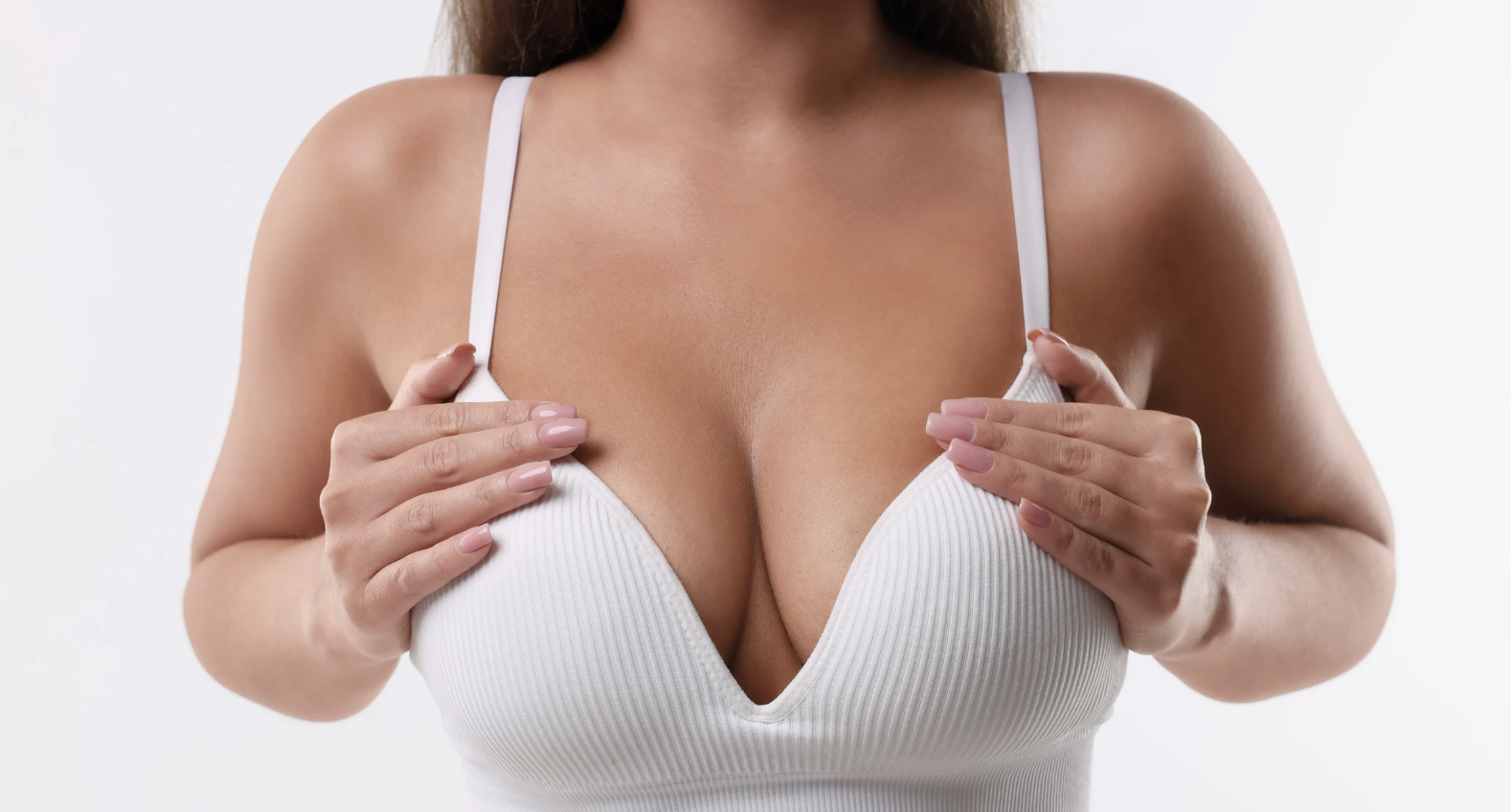Kirsten Fisch, MSN, RNC-MNN, IBCLC, LCCE Kirsten is a women's health nurse who specializes in high-risk pregnancy and postpartum care. She is certified in Maternal Newborn Nursing, a board-certified lactation consultant (IBCLC), and a Lamaze-certified childbirth Educator. She works with women from conception through postpartum. Passionate about empowering women during their reproductive journeys, Kirsten combines evidence-based care with compassionate support to promote health and well-being for mothers and babies.
How to Suppress Lactation When You Know You Don’t Want to Breastfeed
Deciding not to breastfeed is a personal choice—and a valid one. Whether it’s due to physical health, mental wellness, personal preference, past trauma, medication use, or lifestyle reasons, your choice deserves to be respected and supported. While breastfeeding is often promoted as the gold standard, it’s not the only way to nourish and bond with your baby.
If you’ve decided not to breastfeed, it’s helpful to understand what to expect from your body and how to suppress lactation safely and comfortably.
Why Does Lactation Happen, Even If You’re Not Breastfeeding?
After birth, the sudden drop in progesterone (which was high during pregnancy) allows prolactin—the hormone responsible for milk production—to take over. Your body interprets childbirth as a signal to start producing milk, whether or not you plan to breastfeed. Most parents will notice their milk “coming in” between 2 and 5 days postpartum, even without direct breast stimulation.
The process of lactation suppression involves gently and consistently telling your body that milk is not needed. The goal is to minimize discomfort, avoid complications, and help your body transition out of milk production safely and healthily.

Lactation Suppression: What You Can Do
Here are the most effective and evidence-based methods for suppressing lactation:
1. Avoid Breast Stimulation and Milk Expression (as much as possible)
- Your milk supply operates on a supply-and-demand system. Every time you empty your breasts—whether by nursing, pumping, or hand expression—your body gets the message to keep making milk.
- That said, if your breasts become painfully engorged, you can express just enough to relieve the pressure. This helps prevent clogged ducts or mastitis. The key is to express minimally and infrequently.
2. Wear a Supportive Bra
- A firm, well-fitting sports bra can help reduce breast movement and provide support during engorgement. Avoid bras that are too tight or constrictive, as these can block milk ducts and lead to mastitis.
- Don’t bind your breasts with bandages or ace wraps—a practice sometimes suggested in the past. This can be painful and increase the risk of infection.
3. Apply Cold Packs or Chilled Cabbage Leaves
- Cold helps reduce inflammation and pain. Use ice packs or a bag of frozen vegetables wrapped in a cloth and apply to your breasts for 15–20 minutes at a time, several times a day.
- Cabbage leaves are a well-known home remedy. Wash and chill green cabbage leaves, then place them directly inside your bra. Replace every couple of hours until you feel relief.
- The soothing effect may come from the cool temperature, but cabbage contains anti-inflammatory compounds that may help with swelling.
4. Use Over-the-Counter Pain Relievers
- Medications like ibuprofen or acetaminophen can help ease the pain and reduce inflammation during the first few days when engorgement is at its peak.
- Talk to your healthcare provider if you’re unsure about what’s safe to take postpartum, especially if you had a C-section or other complications.
5. Drink Certain Herbal Teas (Optional, and With Caution)
- Herbs such as sage, peppermint, and parsley have been traditionally used to reduce milk supply. In particular, Sage contains a natural estrogen form that may help lower prolactin levels.
- Try sage tea 2–3 times daily, or ask your provider about using a sage tincture.
- Always consult your provider or a lactation specialist before starting herbs, especially if you’re on medication or have any health conditions.
6. Stay Hydrated and Nourished
- Contrary to myths, you should continue drinking fluids and eating well. Dehydrating yourself does not stop lactation and may cause more harm than good. Your body still needs energy to recover from childbirth.
- Focus on healing, resting when possible, and caring for your emotional needs.
Medical Options for Lactation Suppression
In some cases—such as after a stillbirth, adoption, or when rapid suppression is necessary—your doctor may prescribe a medication to stop milk production. These include:
- Cabergoline: A dopamine agonist that lowers prolactin levels quickly and is often given as a single dose. It’s the most commonly prescribed option when lactation suppression is medically indicated.
- Bromocriptine: An older medication that’s less commonly used today due to potential side effects.
These medications are not typically prescribed for routine suppression in healthy postpartum individuals, but you can always ask your provider if you’re interested in this option.
How Long Does It Take for Milk to Dry Up?
Most people’s milk supply decreases within a few days if you’re not breastfeeding or expressing. Here’s a general timeline:
- Days 1–5: Colostrum transitions to mature milk; breasts may feel full or engorged.
- Days 5–10: Engorgement typically peaks and then begins to subside if breasts aren’t being emptied.
- Weeks 2–4: Milk production significantly slows or stops altogether.
Some people may notice occasional leakage or small amounts of milk for weeks or months after stopping. This is normal and doesn’t necessarily indicate a problem.
Emotional Aspects of Suppressing Lactation
Suppressing lactation isn’t just a physical process—it can also be emotional. The postpartum period comes with intense hormonal shifts and emotional highs and lows. Choosing not to breastfeed may bring relief, but it can also stir up guilt, grief, or unexpected sadness—especially in a world that still heavily idealizes breastfeeding.
Some things to remember:
- Your decision is valid; you know what’s best for you and your baby.
- Feeding your baby with love—no matter how you do it—truly matters.
- You’re allowed to grieve the idea of breastfeeding, even if you’re sure you didn’t want to do it.
- If you feel overwhelmed, anxious, or persistently sad, reach out to your provider or a mental health professional. Postpartum depression and anxiety can affect anyone, regardless of feeding method.
Fed is Best
You don’t have to breastfeed to be a good parent. Suppressing lactation is a safe, reasonable, and sometimes necessary decision you can confidently make. With the proper support, you can manage this process with as much comfort and dignity as possible.
Whether you made this decision months ago or just realized it now, know that you’re not alone—and that your body and your baby will be okay.

Kirsten Fisch, MSN, RNC-MNN, IBCLC, LCCE Kirsten is a women's health nurse who specializes in high-risk pregnancy and postpartum care. She is certified in Maternal Newborn Nursing, a board-certified lactation consultant (IBCLC), and a Lamaze-certified childbirth Educator. She works with women from conception through postpartum. Passionate about empowering women during their reproductive journeys, Kirsten combines evidence-based care with compassionate support to promote health and well-being for mothers and babies.




